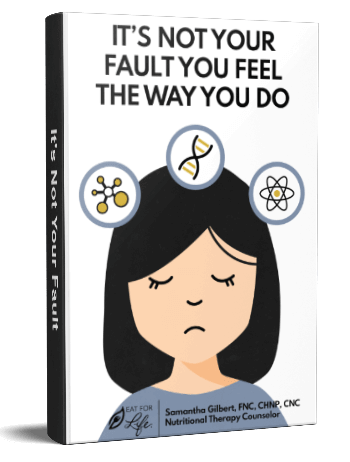Easy Anti-Inflammatory Rice Milk
My easy anti-inflammatory rice milk is a great milk alternative, especially if you are intolerant to coconut and almond milk.
Here’s an interesting conversation I have all the time with clients that goes something like this:
Client: “I see you’ve added white rice to my protocol, isn’t white rice ‘bad’ for you?”
Me: “Actually, white rice is anti-inflammatory and depending on the strain, a low GI food when cooked properly and prepared within the right meal context.”
Client: “Hmmm, then why have we always been told that brown rice is better?”
Me: “Because we fail to recognize the fact that traditional cultures always polish the rice grain to remove anti-nutrients (phytin (phytate), trypsin inhibitor, oryzacystatin and haemagglutinin-lectin) that are responsible for poor mineral balance, which can lead to not-so-great health issues.”
This is always an interesting conversation to have. And trust me, I totally get it. When something is ingrained in your brain from time immemorial you just go with the flow. We all experience it and until we know better, we don’t know how to do better.
Yes, white rice is a starch, but it’s definitely not “bad”, and as I mentioned above, the strain, preparation, and meal context makes all the difference in the world.
The goal here is to reduce inflammation with starches that do not retain toxins after cooking like legumes and cereal grains do.
Here’s why:
- As a rule, gentle cooking then cooling leads to a lower glycemic index, while high cooking temperatures lead to a higher glycemic index.
- GI is calculated by eating a single food and only that food. This means that eating a real meal that includes high-quality protein, fat, and starch, significantly decreases the overall GI of that food. Basmati rice has a GI of 58, but when paired with protein and fat, it is significantly lower (around 37).
- Peak blood glucose levels post-meal are what we want to focus on, not glycemic index, which again, is easily kept in balance with meals that include protein, fat, and a safe starch.
Now on to my recipe.
For Anti-Inflammatory Rice Milk You’ll Need the Following:
- Blender (preferably a high speed one such as a VitaMix or BlendTec)
- 4 cups purified/filtered water
- 1 cup cooked and cooled (overnight for 12 hours) organic white sushi rice
- Pinch ground vanilla beans (optional)
- Stevia to taste (organic ground powder from whole leaves or liquid drops, I like Sweet Leaf brand)
Add water then rice to your blender and blend until milky. Then add spices and blend again for a few seconds. No straining required like nut milks! Will last up to 5 days in the fridge.
This is an excellent dairy and nut alternative (nuts are high in copper and over 85% of women are overloaded in copper and don’t even know it). It also makes a great base for protein smoothies and desserts. And unlike coconut milk, it is not high in salicylates, which can be troublesome for many folks. Not to mention you’re leaving behind all the preservatives and junk in carton options.
Here’s a challenge for you: switch out your traditional milk with my anti-inflammatory rice milk for 30 days and see how you feel. Be sure to let me know how it works out for you in the comments below!



Thanks for the recipe. Concerning the gi: how much will the 24-hrs cooling of rice milk lower the gi? And would a teaspoon of cacao significantly lower the gi?
Thanks for the recipe. If many of us have SIBO (from copper and other issues) then cooling rice creates resistant starch. Seems when starting this healing journey resistant start is not going to be good for me (gives me gas due to my digestive issues) so I am kind of questioning the rice milk in the context of SIBO? Dr. Robillard at the digestivehealthinstitute.org writes about this issue at length in regards to SIBO.
Thanks for all the wonderful recipes. Will other types of rice work for this besides sushi rice? It’s much more expensive than other ones.
When you say slow cooking lowers GI, do you mean actual slow cooking over hours instead of doing it in a rice cooker? What about a pressure cooker? Do you approve that?
Many producers of rice milk used different ingredients which are unhealthy and lack nutrients bu the rice milk produced by Shafi Gluco Chem have proven to be of premium quality as it does not contain any chemicals and easy to digest and avoids bloating.
Is being high in copper evidenced in yeast overgrowth?
At this time, testing could only be afforded for our most struggling fam member (oldest daughter). She was high in copper.
Dad: depression, toe fungus and athlete foot
Middle daughter: psioriasis on scalp
I,myself: psioriasis on scalp since 18, focus disorder
Absolutely. This is something I see often. Copper and zinc work in tandem with each other to control the overgrowth of fungal, yeast, and parasitic infections. With copper high and zinc low, these types of infections can become chronic and difficult to eliminate.
Cool
I was looking at some of your posts on this site and I conceive this web site is real instructive! Continue putting up.
Thank you for your comment!
Thank-you for another great article. I’ve been trying to get more carbs in my diet and have been experimenting with rice. In case anyone else is exceptionally sensitive to salicylate, Sue Dengate, creator of F.A.I.L.S.A.F.E. writes: Rice Plain e.g. Sunwhite, medium or long grain, Arborio, Doongara, glutinous (sushi type rice) but not flavored like basmati, jasmine, wild rice. For more info see http://fedup.com.au/information/information/short-failsafe-shopping-list. This is a link to a list from Anne Swain of the salicylate content of other foods. http://www.failsafediet.com/the-rpah-elimination-diet-failsafe/salicylate-content-of-foods/
Thank you Lisa for sharing a great resource!
There are many articles written that rice flour, corn flour, tapioca starch and corn starch are ALL junk carbohydrates to be totally avoided by anyone serious about preventing inflammation in their bodies.
Tolerance/inflammatory response is dependent upon an individual’s biochemistry. Potato starch can be an excellent source of resistant starch that creates healthy gut microbes.
Thanks for this great post. I struggle all of the time to find the right “milk” for shakes and for my turmeric based “golden milk” which I like to drink daily. Making almond milk with real almonds is expensive and too time consuming. One question: How long will the milk keep in the fridge. Thanks Samantha.
You’re so welcome John! I love golden milk too! It will last up to 5 days in the fridge. 🙂
Thanks Sami! I was wondering if there is a safe ingredient that could be added to this recipe to give it a little more”body” more like regular milk ?
Hi Deb,
You’re very welcome! A couple of options include arrowroot, tapioca, or potato starch. Adding in a little fat helps too. Personally, I like to use MCT oil or for a buttery flavor, ghee.